Embark on an extraordinary trekking adventure with Amen Bhutan Tours and Treks Pvt Ltd, as we invite you to explore the breathtaking landscapes and cultural wonders of Bhutan. Our meticulously crafted trekking experiences are designed to immerse you in the heart of the Himalayas, where snow-capped peaks, lush valleys, and ancient monasteries create a backdrop for unforgettable moments. Whether you are an avid trekker seeking challenging trails or a nature enthusiast eager to discover the serene beauty of Bhutan, our expert guides and carefully curated itineraries ensure an enriching and safe journey.
At Amen Bhutan, we believe in more than just traversing trails; we strive to connect you with the soul of Bhutan. Our trekking packages offer not only physical challenges but also opportunities to engage with local communities, witness vibrant cultural practices, and experience the warmth of Bhutanese hospitality. Join us for an expedition that goes beyond the ordinary, where every step unveils a new facet of this mystical kingdom, and every trek becomes a celebration of nature, culture, and the spirit of adventure.
Bhutan Trekking Trails
Druk Path Trek
The Druk Path Trek in Bhutan is a captivating 5 to 6-day journey spanning approximately 55 kilometers, commencing from the scenic town of Paro and concluding in the capital, Thimphu. Renowned for its accessibility and stunning vistas, the trek takes adventurers through lush alpine forests, picturesque landscapes, and charming yak herder's camps. Along the route, trekkers encounter pristine mountain lakes, including the sacred Jimilang Tsho. The trail also encompasses several high mountain passes, offering breathtaking panoramic views of the Eastern Himalayas. Not only does the Druk Path Trek provide a glimpse into Bhutan's natural beauty, but it also offers cultural insights with visits to iconic monasteries like Taktsang (Tiger's Nest) and the colorful Kyichu Lhakhang. The relative brevity and accessibility make the Druk Path Trek an ideal choice for those seeking a rewarding trekking experience in Bhutan.
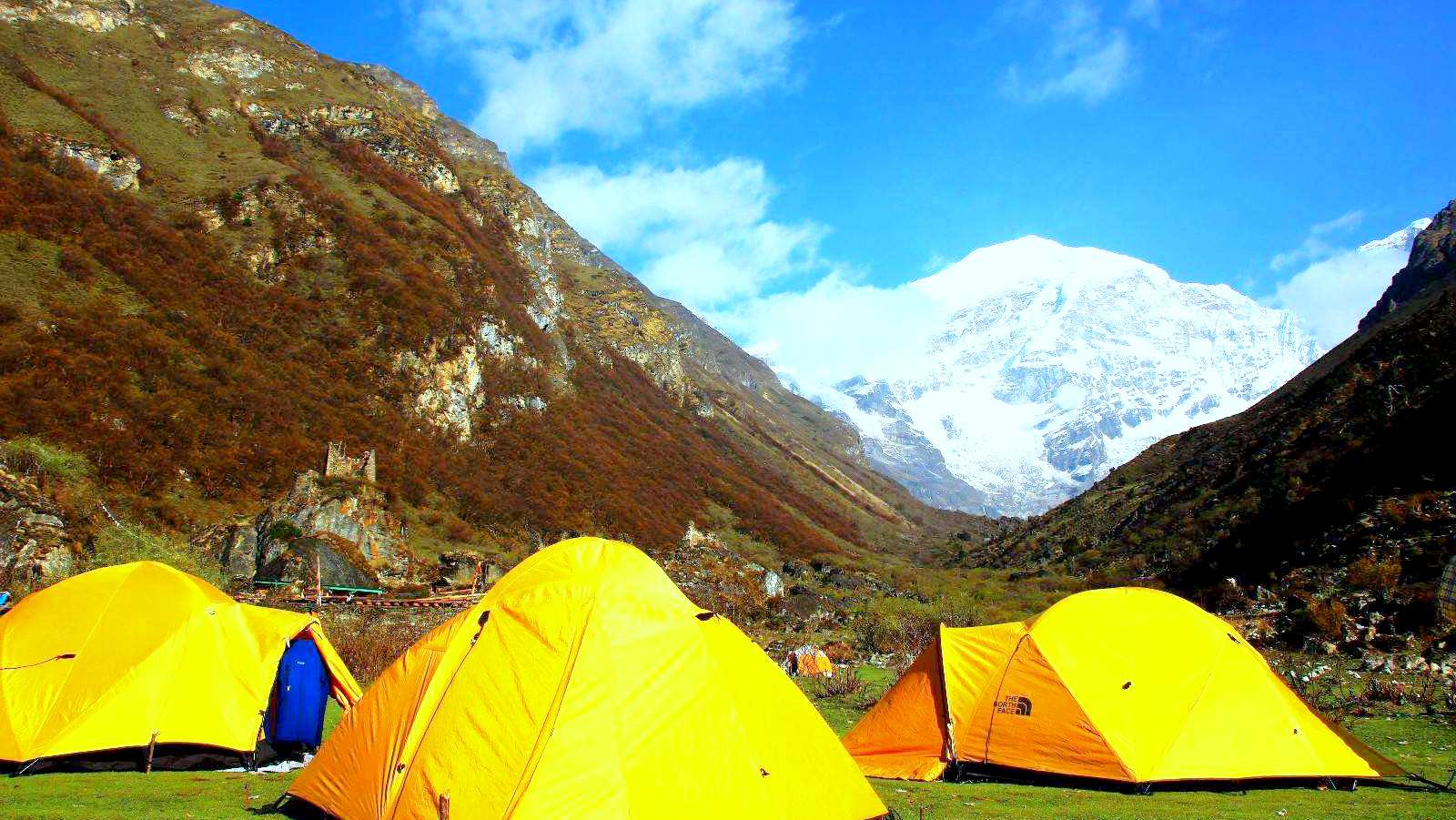
- Duration: 5-6 days
- Distance: Approximately 55 km
- Highlights: The trek starts from Paro and goes to Thimphu, passing through beautiful landscapes, alpine forests, and yak herder's camps. It offers stunning views of the Himalayan peaks.
Jamolhari Trek
The Jomolhari Trek, an immersive 8 to 9-day adventure covering approximately 110 kilometers, is renowned as one of Bhutan's most iconic and challenging treks. Beginning in Paro and culminating at the base of the sacred Mt. Jomolhari, this trek winds through diverse landscapes, including dense forests, alpine meadows, and high mountain passes. Trekkers are treated to awe-inspiring views of the Himalayan peaks and have the opportunity to explore remote villages and encounter the unique culture of the highland communities. Highlights of the Jomolhari Trek include the serene Jomolhari and Jichu Drake lakes, as well as visits to ancient monasteries like Dzongdrakha and Thombu. The trek demands physical endurance, but the breathtaking scenery, cultural richness, and encounters with Bhutan's pristine wilderness make it a truly rewarding and memorable experience for those seeking an immersive Himalayan trekking adventure.
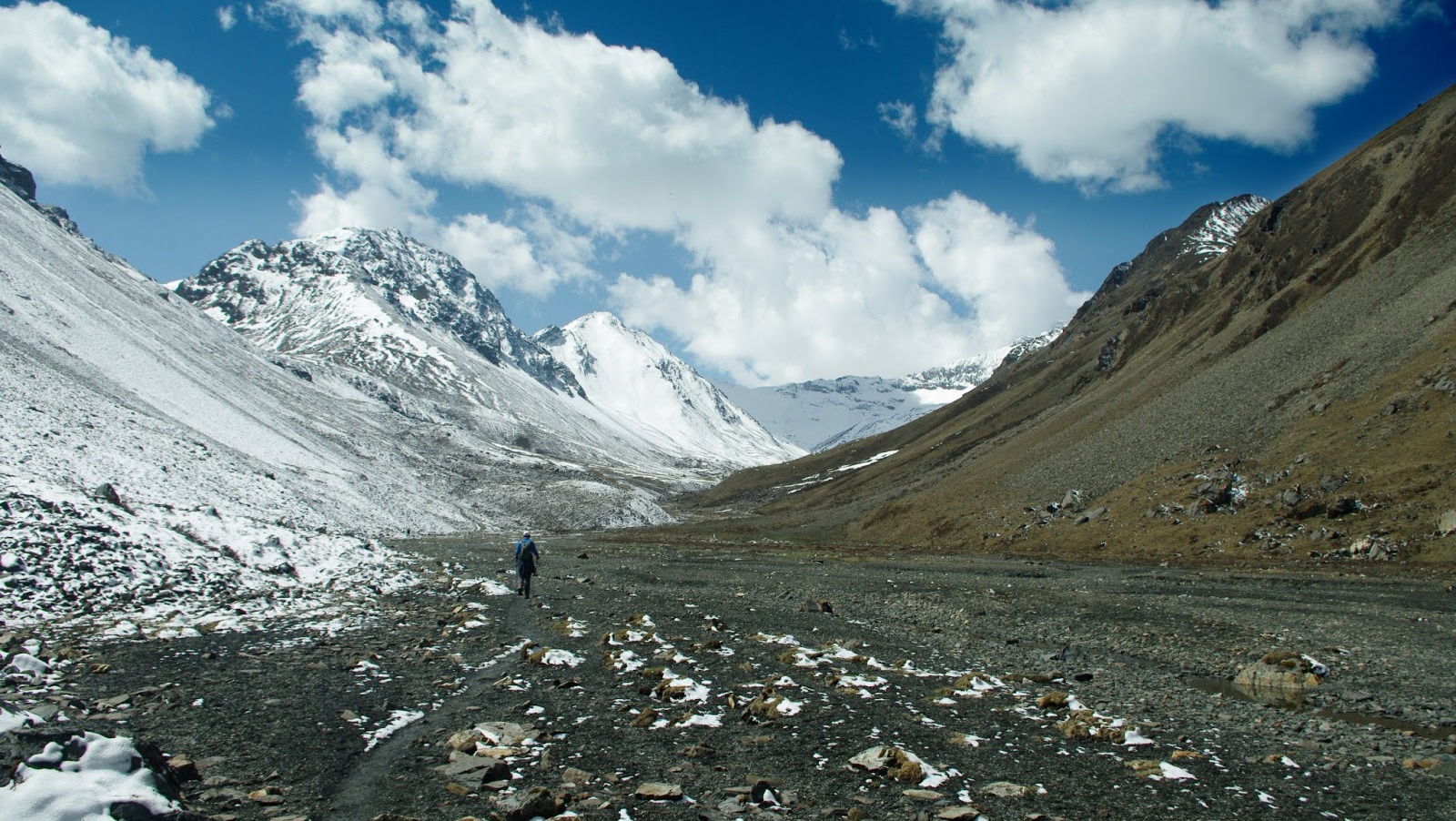
- Duration: 8-9 days
- Distance: Approximately 110 km
- Highlights: This trek takes you to the base of Mt. Jomolhari, one of Bhutan's most sacred peaks. You'll pass through remote villages, dense forests, and high mountain passes.
Snowman Trek
The Snowman Trek stands as one of the most formidable and epic trekking challenges in Bhutan, spanning a staggering 25 to 30 days and covering approximately 356 kilometers. This arduous journey takes trekkers through some of the highest and most remote regions of the Bhutanese Himalayas, crossing numerous challenging mountain passes, including the formidable Gangla Karchung La at over 5,300 meters. As the longest and most demanding trek in Bhutan, the Snowman Trek offers unparalleled vistas of the towering peaks, pristine alpine landscapes, and encounters with isolated villages along the way. Trekkers must contend with varying weather conditions, high altitudes, and rugged terrains, making it a test of physical and mental endurance. The Snowman Trek is not only an adventure into the heart of Bhutan's wilderness but also a cultural odyssey as it passes through ancient monasteries, remote communities, and offers a profound immersion into the unique traditions of this Himalayan kingdom.
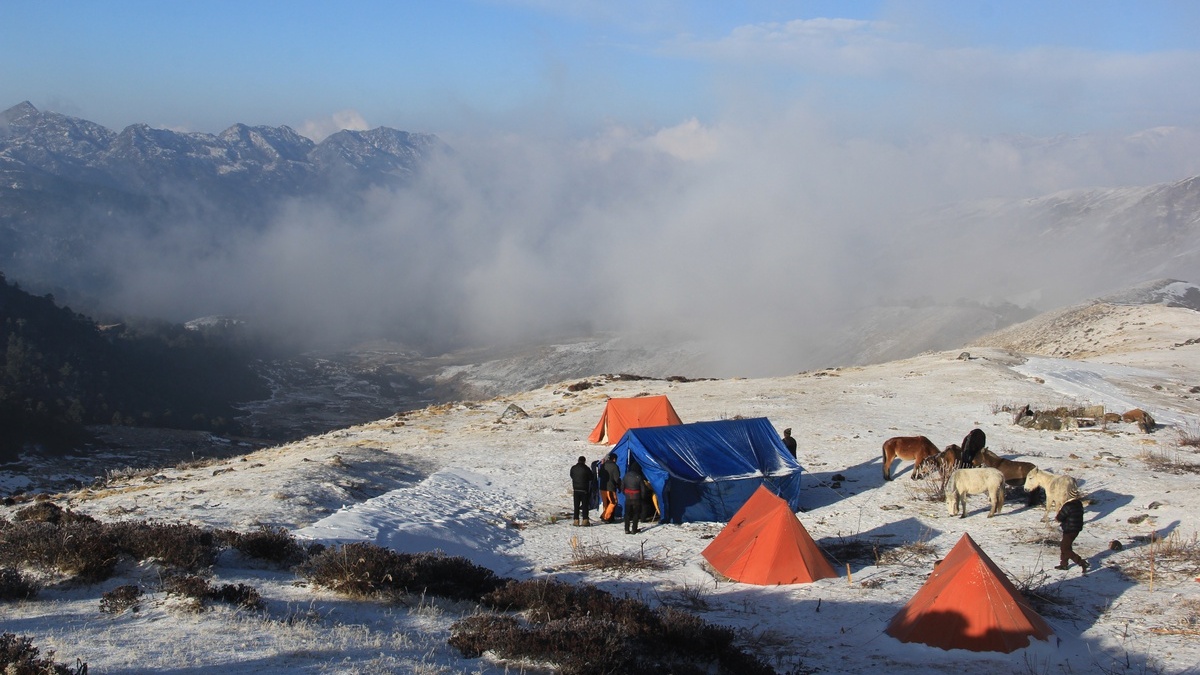
- Duration: 25-30 days
- Distance: Approximately 356 km
- Highlights: One of the most challenging treks in the world, the Snowman Trek traverses the high-altitude areas of Bhutan. It crosses several mountain passes, offering breathtaking views and encounters with remote villages.
Laya-Gasa Trek
The Laya-Gasa Trek, spanning 15 to 16 days and covering approximately 217 kilometers, is a captivating journey through the pristine landscapes and cultural wonders of Bhutan. Beginning in Paro, this trek takes adventurers through enchanting rhododendron forests, high mountain passes, and picturesque valleys, leading to the remote village of Laya and eventually reaching Gasa. The trek offers a unique cultural experience as it allows trekkers to interact with the Layap people, known for their distinctive customs and attire. Highlights of the trek include panoramic views of the snow-capped peaks, encounters with yak herders, and a rejuvenating stop at the Gasa hot springs. The Laya-Gasa Trek provides a perfect blend of natural beauty and cultural immersion, making it a memorable and enriching adventure in the heart of the Bhutanese Himalayas.
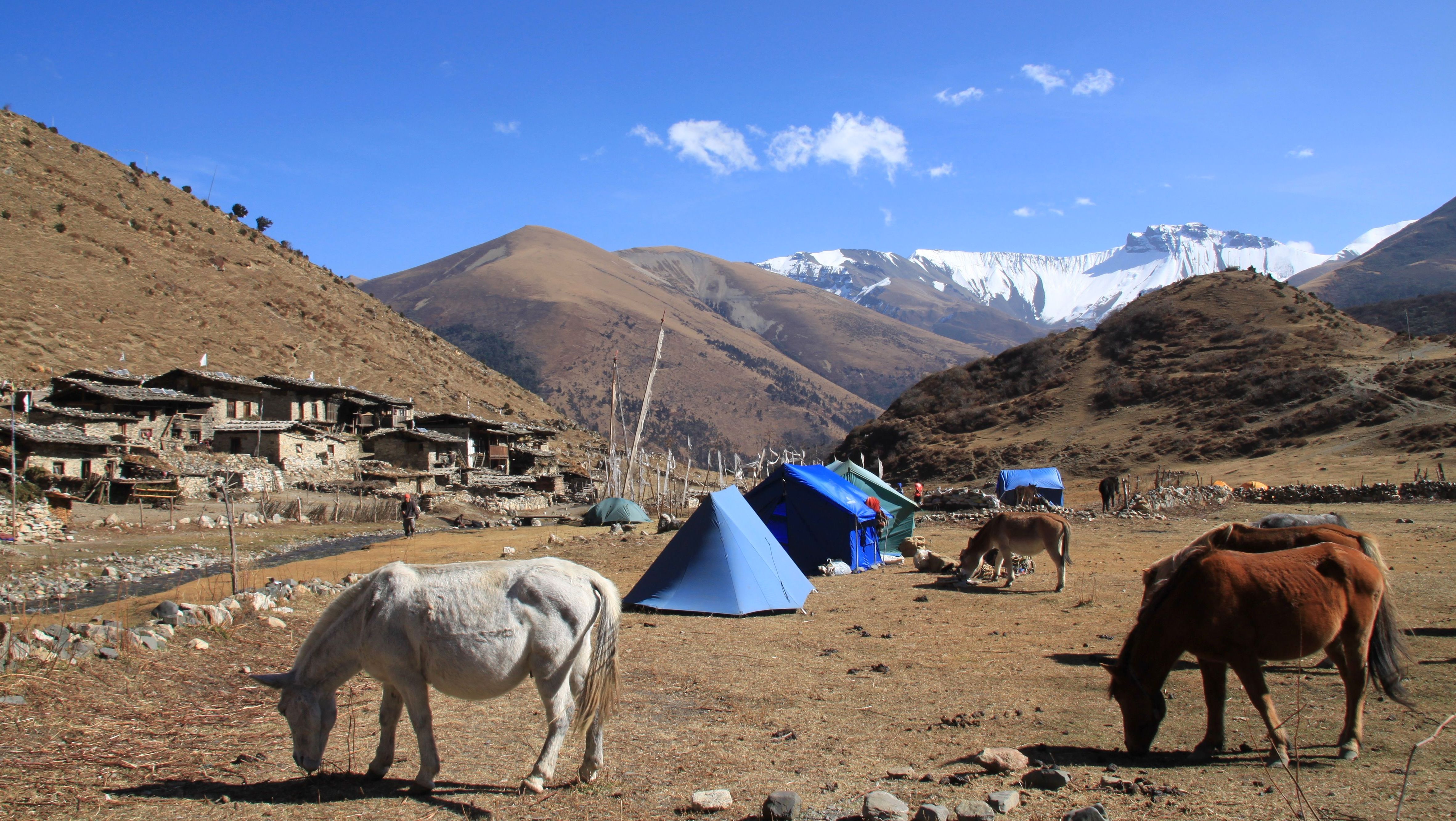
- Duration: 15-16 days
- Distance: Approximately 217 km
- Highlights: This trek takes you through the picturesque villages of Laya and Gasa, allowing you to experience the unique culture of the Layap people. You'll also enjoy hot springs at Gasa.
Bumthang Owl Trek
The Bumthang Owl Trek, a 3-day trek covering approximately 48 kilometers, offers a condensed yet enchanting exploration of Bhutan's cultural and natural treasures. Nestled in the Bumthang Valley, renowned for its historic temples and monasteries, this trek introduces adventurers to the unique charm of central Bhutan. The trail winds through quaint villages, apple orchards, and pristine forests, providing glimpses of traditional Bhutanese architecture and rural life. Trekkers have the opportunity to visit sacred sites such as the Tamshing Lhakhang and Tharpaling Monastery, immersing themselves in the rich cultural tapestry of the region. Despite its shorter duration, the Bumthang Owl Trek is a rewarding journey that encapsulates the essence of Bhutan's spirituality, natural beauty, and cultural heritage.
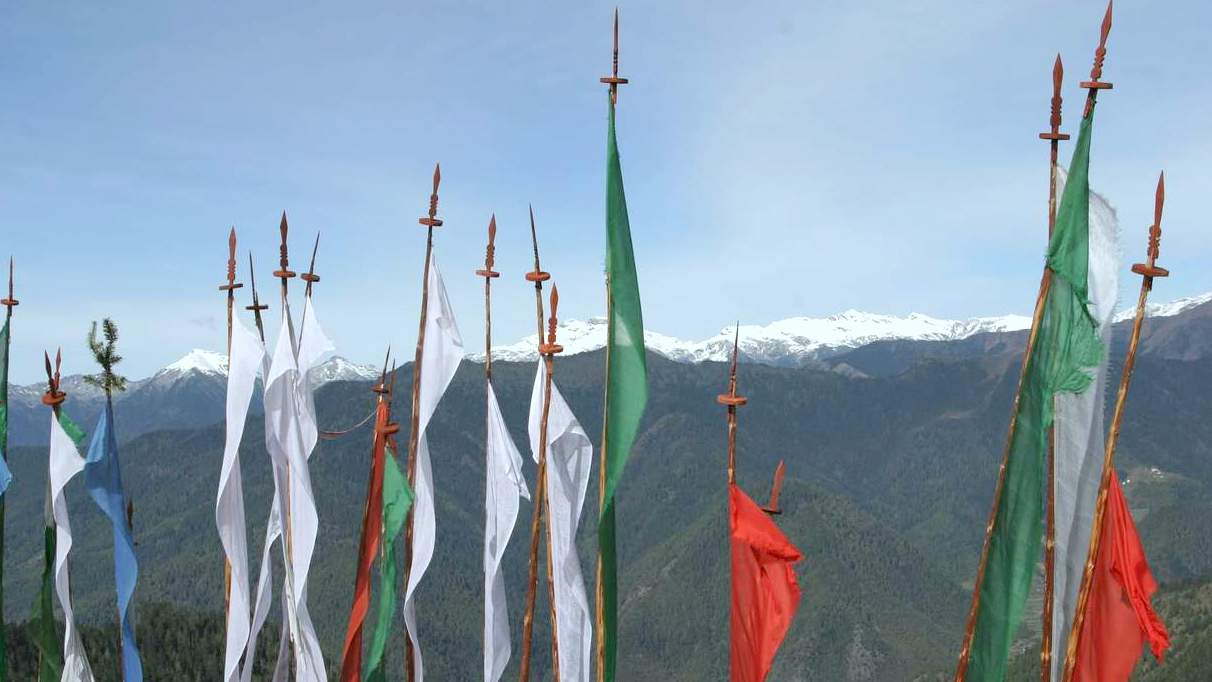
- Duration: 3 days
- Distance: Approximately 48 km
- Highlights: A shorter trek, the Bumthang Owl Trek explores the cultural and natural wonders of the Bumthang Valley, known for its historic temples and monasteries.
Dagala Thousand Lakes Trek
The Dagala Thousand Lakes Trek is a captivating 6-day adventure covering approximately 60 kilometers, offering a unique and mesmerizing exploration of the Dagala region in Bhutan. Known for its alpine meadows and numerous glacial lakes, this trek takes trekkers through pristine landscapes with breathtaking views of the surrounding mountains. The trail winds through rhododendron forests, yak pastures, and high mountain passes, providing opportunities to witness the diverse flora and fauna of the region. The highlight of the trek is the opportunity to explore the serene Dagala Lakes, each with its distinct charm, creating a picturesque backdrop against the backdrop of the Himalayan peaks. With its shorter duration and diverse natural beauty, the Dagala Thousand Lakes Trek is a fantastic option for those seeking a rewarding trekking experience in Bhutan.
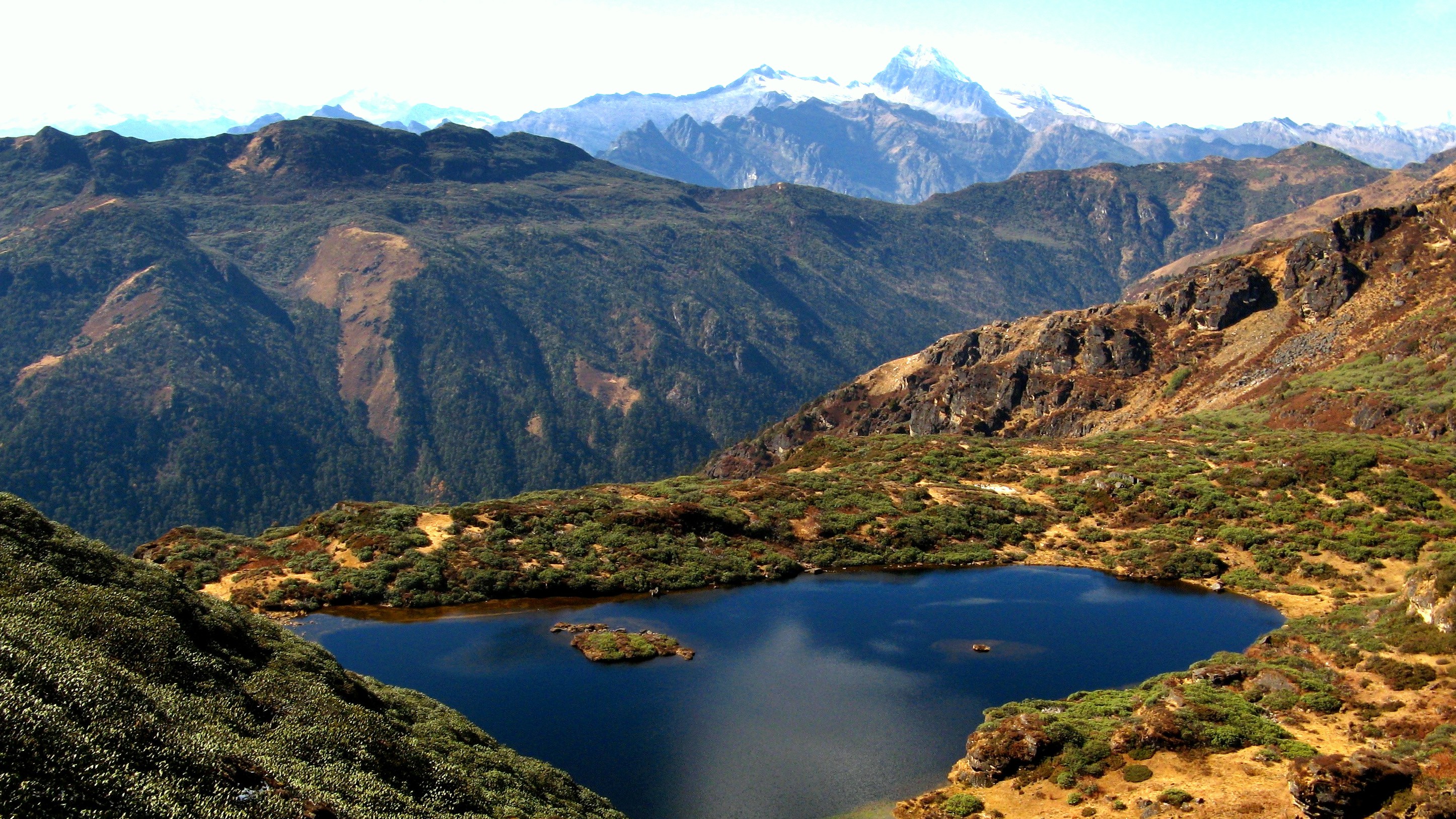
- Duration: 6 days
- Distance: Approximately 60 km
- Highlights: This trek takes you through the beautiful Dagala region, known for its numerous alpine lakes. The trek offers panoramic views of the Himalayas.
Bumthang Cultural Trek
The Bumthang Cultural Trek, spanning over several days, is a remarkable journey through the heart of Bhutan's cultural and religious heritage. This trek allows participants to explore the picturesque Bumthang Valley, renowned for its sacred monasteries and ancient temples. Trekking through charming villages and verdant landscapes, adventurers will visit significant cultural sites such as Jakar Dzong, Jambay Lhakhang, and Kurje Lhakhang, each steeped in Bhutanese history and spirituality. The trek provides a unique opportunity to witness traditional Bhutanese architecture, interact with local communities, and partake in religious festivals or events if the timing aligns. This cultural immersion, combined with the scenic beauty of the Bumthang Valley, makes the Bumthang Cultural Trek an enriching experience that captures the essence of Bhutan's rich cultural tapestry.

- Duration: 4 to 7 days
- Distance: Approximately 80 km
- Highlights: The Bumthang Cultural Trek unfolds a tapestry of Bhutanese heritage, weaving through sacred monasteries, traditional villages, and lush landscapes, offering a singular journey into the heart of Bhutan's rich cultural and spiritual traditions.
Bhutan offers a diverse range of trekking routes, each providing a unique adventure blending breathtaking landscapes with rich cultural experiences. From the iconic Druk Path Trek to the challenging Snowman Trek and cultural gems like the Laya Gasa Trek, the kingdom's commitment to preserving its natural and cultural heritage makes every trek a memorable journey. With required permits and local guides, trekkers can explore pristine wilderness, visit traditional villages, and witness the beauty of the Himalayas in a sustainable and culturally respectful manner. Whether camping under the stars or staying in local teahouses, Bhutan's trekking routes offer a perfect balance of nature, culture, and adventure.
Bhutan Trekking Season
Spring (March to May)
As the Eastern Himalayas emerge from their winter slumber, spring beckons adventurers to partake in the ultimate trekking experience in Bhutan. From March to May, Amen Bhutan Tours and Trek Pvt Ltd unveils the best time to trek Bhutan, inviting enthusiasts to witness nature's grandeur in full bloom. Embark on a journey through the kingdom's pristine landscapes, adorned with vibrant blossoms and rejuvenated trails. Our seasoned trekking guides ensure a seamless exploration of the best trekking routes in Bhutan, as temperatures ranging from 10°C to 25°C provide an ideal climate for outdoor enthusiasts. Immerse yourself in the cultural tapestry of this Himalayan haven during the spring season, where every step echoes with the promise of awe-inspiring vistas and unforgettable memories. Your springtime trekking adventure in Bhutan awaits, promising an experience that transcends the ordinary.
Autumn (September to November)
Step into the enchanting realm of Bhutan during the autumn months, from September to November, as Amen Bhutan Tours and Trek Pvt Ltd reveals the epitome of trekking perfection in this Himalayan haven. As the summer monsoons bid adieu, the landscape undergoes a transformation, revealing the vibrant hues of fall foliage. This marks the best time to trek Bhutan, offering outdoor enthusiasts an unparalleled adventure amidst pleasant temperatures ranging from 5°C to 20°C. Our expert guides lead the way through the kingdom's best trekking routes, ensuring an immersive experience that combines high-altitude challenges with the cultural richness of the region. Join us during the autumn trekking season, where each step echoes with the crunch of fallen leaves, and every trail unfolds a mesmerizing tapestry of nature's grandeur. Your autumnal journey through Bhutan promises not just a trek but a symphony of colors and unforgettable moments.
Avoid the monsoon season (June to August) if you're planning trekking, as heavy rainfall can make trails muddy and challenging. Winter (December to February) is also a possibility for cultural experiences in lower-altitude regions, but high-altitude treks may be affected by snow and colder temperatures. Always check weather conditions and plan accordingly based on your preferences and the specific activities you wish to engage in during your visit to Bhutan.
Adventure Activities
Embark on exhilarating adventure activities during your Bhutan trek, where the stunning landscapes serve as a backdrop for thrilling experiences. Explore the trails on horseback or try your hand at mountain biking, navigating through picturesque terrain. For the daring, rock climbing and river rafting opportunities abound, adding an adrenaline rush to the cultural richness of your trekking journey. Immerse yourself in the natural beauty of Bhutan while indulging in these exciting activities, creating memories that blend adventure with the enchanting allure of the Himalayas.

- Camping: Camping is an integral part of trekking in Bhutan. Setting up camp in the Himalayan wilderness allows you to connect with nature and experience the tranquility of the mountains.
- Cultural Encounters: Many trekking routes in Bhutan pass through traditional villages and offer opportunities to interact with local communities. Learn about Bhutanese culture, customs, and traditions firsthand.
- Monastery Visits: Bhutan is known for its monasteries and dzongs. Trekking routes often include visits to these sacred sites, providing a chance to experience the country's spiritual heritage.
- Hot Springs Relaxation: Some trekking routes lead to natural hot springs, such as those in Gasa and Laya. Relax your muscles in the therapeutic waters surrounded by breathtaking landscapes.
- Photography: Capture the stunning landscapes, unique flora and fauna, and cultural nuances during your trek. Bhutan offers fantastic photo opportunities at every turn.
- Traditional Archery: Join locals for a game of archery, Bhutan's national sport. It's a fun way to engage with the culture and people during breaks in your trek.
- Wildlife Watching: Keep an eye out for Bhutan's diverse wildlife. Depending on your trekking route, you may spot takins, red pandas, various bird species, and even the elusive snow leopard.
- Stargazing: The clear night skies in the Himalayas provide excellent opportunities for stargazing. Away from city lights, you can witness a breathtaking celestial display.
- Cooking Classes: Some trekking tours offer cooking demonstrations, allowing you to learn how to prepare traditional Bhutanese dishes. It's a hands-on cultural experience.
- Mountain Photography Workshops: Join a photography workshop led by experts to improve your photography skills while capturing the beauty of the Himalayan landscapes.
- Yak Riding: In certain regions, you might have the opportunity to ride yaks, the iconic Himalayan beasts of burden, adding a unique and memorable experience to your trek.
- Forest Bathing: Take advantage of the lush forests along trekking routes for some therapeutic forest bathing. Bhutan's pristine nature is ideal for rejuvenating your mind and body.
- Bird Watching: Bhutan is a paradise for birdwatchers. Bring along your binoculars and identify the many bird species that inhabit the mountainous regions.
- Storytelling Sessions: Local guides often have fascinating stories and legends to share. Engage in storytelling sessions around the campfire to learn more about Bhutanese folklore.
- Rafting: Experience exhilarating rafting adventures in Bhutan as you navigate the pristine rivers of Punakha and Pho Chhu, surrounded by breathtaking landscapes and thrilling rapid
Before engaging in any additional activities during your trek, ensure that you are adequately prepared, follow safety guidelines, and respect the natural and cultural surroundings. Always check with your tour operator or guide for specific opportunities along your chosen trekking route.
Rich Cultural Experience
Trekking in Bhutan is not just a journey through stunning landscapes but also a rich cultural experience. As you navigate the ancient trails, encounter traditional Bhutanese villages where locals warmly welcome trekkers. Explore centuries-old monasteries perched on mountain slopes, offering insight into Bhutan's deeply rooted spiritual and cultural heritage. Witness colorful festivals, if your trek coincides with one, and partake in age-old rituals that showcase the vibrant Bhutanese traditions. Trekking routes often lead through historic trade routes and pilgrimage paths, revealing the historical significance of the land. Engage with friendly locals, savor Bhutanese cuisine, and immerse yourself in the unique blend of spirituality and culture that defines this enchanting Himalayan kingdom.

- Buddhist Monasteries and Dzongs: Bhutan is home to numerous monasteries and dzongs (fortress-monasteries), each with its own architectural and spiritual significance. Paro Taktsang (Tiger's Nest), Punakha Dzong, and Trongsa Dzong are among the iconic landmarks.
- Religious Festivals (Tsechus): Bhutanese festivals, known as Tsechus, are vibrant celebrations featuring traditional dances, mask performances, and religious rituals. Attendees often include locals and pilgrims, creating a lively atmosphere.
- Traditional Bhutanese Architecture: The architecture of Bhutan reflects its cultural and spiritual values. Traditional buildings, with intricate woodwork and colorful paintings, are a common sight. Bhutanese architecture is notably evident in dzongs, monasteries, and traditional homes.
- Dress: Bhutanese people often wear traditional attire. The national dress for men is the gho, a knee-length robe, while women wear the kira, a colorful ankle-length dress. The attire varies in style and colors based on the region.
- Ceremonial Events: Bhutanese ceremonies, such as weddings and religious rituals, offer insights into the cultural customs and traditions. These events often involve elaborate rituals, dances, and communal gatherings.
- Cuisine: Bhutanese cuisine is distinctive and reflects the country's agricultural practices. Staples include rice, chili peppers, and dairy products. The national dish, Ema Datshi, is a spicy chili and cheese stew.
- Traditional Arts and Crafts: Bhutan has a rich tradition of arts and crafts. Thangka painting, wood carving, sculpture, and traditional weaving are highly valued forms of artistic expression. You can visit workshops to witness artisans at work.
- Archery, Bhutan's National Sport: Archery plays a significant role in Bhutanese culture. It is the national sport, and archery competitions are held during festivals. Participating or observing an archery match provides a unique cultural experience.
- Music and Dance: Traditional Bhutanese music and dance are integral to cultural events and ceremonies. Masked dances, known as cham dances, are performed by monks during religious festivals, each with symbolic meanings.
- Gross National Happiness (GNH): Bhutan's unique approach to development includes the concept of Gross National Happiness, emphasizing holistic well-being over purely economic factors. This philosophy influences cultural practices and societal values.
- Language and Literature: The Bhutanese language, Dzongkha, is an essential aspect of cultural identity. Bhutanese literature, including folktales and religious texts, plays a crucial role in preserving and transmitting cultural knowledge.
- Village Life: Visiting traditional villages allows you to experience everyday life in Bhutan. You can witness agricultural practices, interact with locals, and gain a deeper understanding of rural culture.
- Royal Heritage: Bhutan's monarchy is deeply revered, and the royal family plays a significant role in national life. Visiting royal palaces and learning about the history of the monarchy provides cultural insights.
- Cultural Treks: Trekking in Bhutan often includes visits to remote villages and cultural sites, offering a unique opportunity to engage with local communities and experience their traditional way of life.
Bhutan's commitment to preserving its cultural heritage and maintaining a sustainable and harmonious way of life makes it a truly unique destination for those seeking rich cultural experiences.
Trekking Guides in Bhutan
As stewards of the Eastern Himalayas, our expert navigators are not merely facilitators but storytellers and cultural interpreters. Trained to unravel the secrets of Bhutan's trekking trails, they lead you through the best routes with a deep understanding of the region's unique topography, weather patterns, and cultural nuances. Beyond ensuring a safe and seamless journey, our guides share tales of ancient monasteries, traditional villages, and the untold stories that define Bhutan's spiritual heritage. Trust in their expertise, and let every step be a revelation in the enchanting narrative of the Land of the Thunder Dragon. Your trekking adventure in Bhutan begins with the wisdom and guidance of our skilled and passionate trekking guides.
Trekking guides in Bhutan play a crucial role in ensuring a safe, enjoyable, and culturally enriching trekking experience for visitors. Here's an overview of their role and responsibilities:
- Local Expertise: Trekking guides are typically locals with extensive knowledge of the trekking trails, terrain, and the cultural and natural aspects of Bhutan. Their familiarity with the local environment is invaluable.
- Navigation: Guides are responsible for leading trekkers along the designated trails, ensuring they stay on the right path and avoid potential dangers or difficulties.
- Safety and Emergency Response: Guides are trained to handle various emergency situations. They can provide first aid, assess risks, and coordinate evacuations if needed. Their knowledge of the local conditions is essential in ensuring the safety of trekkers.
- Cultural Interpretation: Bhutan is rich in culture and traditions. Guides often serve as cultural interpreters, providing insights into local customs, traditions, and the significance of the places visited during the trek.
- Logistical Support: Guides manage logistical aspects such as organizing permits, arranging accommodation in trekking huts or campsites, and coordinating meals. This allows trekkers to focus on the trek itself.
- Language Assistance: Guides often speak multiple languages, including English, which facilitates communication between trekkers and local communities.
- Environmental Stewardship: Guides promote responsible trekking practices, including Leave No Trace principles. They educate trekkers on how to minimize their environmental impact and respect the delicate ecosystems they encounter.
- Crisis Management: In case of unforeseen circumstances like changes in weather or unexpected obstacles, guides can make informed decisions to adapt the trek accordingly and ensure the safety of the group.
- Equipment and Gear Oversight: Guides help trekkers prepare for the journey by advising on appropriate gear and ensuring that everyone has the necessary equipment for a safe and comfortable trek.
- Building Connections: Guides often act as a bridge between trekkers and local communities, fostering positive interactions and mutual understanding.
Having a knowledgeable and experienced trekking guide enhances the overall trekking experience, allowing trekkers to immerse themselves in the natural beauty and cultural richness of Bhutan while minimizing potential risks and challenges.
Sustainable Trekking
Embark on a sustainable trekking adventure in Bhutan, where the breathtaking landscapes are matched only by the country's commitment to environmental conservation. Bhutan's unique approach to tourism ensures a low-impact experience, with limited visitor numbers and a focus on responsible trekking practices. Traverse pristine trails surrounded by lush forests, majestic mountains, and traditional villages, all while minimizing your ecological footprint. Bhutan's dedication to maintaining its pristine environment, coupled with the opportunity to engage with local communities, makes for an unforgettable and eco-friendly trekking experience in this Himalayan kingdom.
- Responsible Tourism Practices: Encourage responsible trekking practices among visitors, including the principles of Leave No Trace. Minimize the ecological footprint by practicing responsible waste disposal and reducing resource consumption.
- Cultural Respect: Promote cultural sensitivity and respect for local traditions. Educate trekkers about Bhutanese customs, etiquette, and the significance of cultural sites they may encounter during the trek.
- Local Community Engagement: Foster positive relationships with local communities along trekking routes. Involve and benefit local communities by hiring local guides, porters, and support staff. Support community-based tourism initiatives.
- Environmental Conservation: Contribute to the conservation of the natural environment by adhering to designated trekking trails, avoiding wildlife disturbance, and supporting conservation initiatives. Work towards maintaining the biodiversity of the region.
- Waste Management: Implement effective waste management practices, including the proper disposal of litter. Promote the use of eco-friendly and reusable products. Carry out waste removal activities, including the removal of non-biodegradable waste.
- Limited Group Size: Consider limiting the size of trekking groups to minimize the impact on the environment and ensure a more intimate and enjoyable experience for trekkers.
- Low-Impact Accommodations: Choose accommodations that follow sustainable practices, such as eco-friendly lodges and campsites. Ensure that accommodations minimize their impact on the local environment.
- Carbon Offsetting: Explore options for carbon offsetting to mitigate the carbon footprint associated with travel to and from Bhutan. Support initiatives that invest in renewable energy or reforestation projects.
- Educational Initiatives: Conduct educational programs for both guides and trekkers to raise awareness about the importance of sustainable practices. Encourage responsible behavior and promote a deeper understanding of Bhutan's unique ecosystems.
By incorporating these sustainable trekking practices, you contribute to the preservation of natural environments, the well-being of local communities, and the long-term viability of trekking destinations. It's essential to be mindful of your impact and strive to leave the places you visit in a better condition than you found them.
Remote Trekking in Bhutan
Remote trekking in Nepal offers adventurous trekkers the opportunity to explore untouched landscapes, hidden valleys, and pristine mountain regions far from the popular trekking routes. These off-the-beaten-path adventures provide a sense of solitude and a chance to connect with nature in its purest form. Remote trekking routes often lead to remote villages where traditional cultures and lifestyles remain relatively undisturbed. Trekkers can traverse challenging terrains, cross high mountain passes, and witness breathtaking scenery with fewer fellow travelers. The experience of remote trekking in Nepal is not only physically demanding but also culturally enriching, offering a unique perspective on the diverse and rugged beauty of the Himalayan region. Trekking enthusiasts seeking a more secluded and authentic adventure will find remote trekking in Nepal to be a rewarding and unforgettable experience.

Snowman Trek
The Snowman Trek, renowned as one of the world's most difficult treks, promises an unparalleled experience as you navigate through the pristine landscapes of Bhutan, adorned with snow-clad peaks and pristine glaciers. This remote trek is not just a physical challenge; it's a spiritual journey where every step echoes with the whispers of ancient mountains and the resilience of a kingdom's natural beauty. Join us on the Snowman Trek, where the remote wilderness of Bhutan unfolds in all its glory, and every moment becomes a triumph etched in the annals of your Himalayan exploration.
Jomolhari Loop Trek
While Jomolhari itself is a popular trekking destination, the Jomolhari Loop takes a more remote route, allowing you to explore less-traveled areas and experience the solitude of the Himalayan wilderness.this remote trek unveils dramatic mountain vistas, alpine meadows, and traditional villages where ancient traditions come to life. As you navigate high mountain passes and delve into the solitude of untouched valleys, the Jomolhari Loop Trek promises an intimate exploration of Bhutan's raw beauty. Each day brings a new chapter in this Himalayan adventure, where the remoteness of the landscape is matched only by the warmth of Bhutanese hospitality. Join us for a remote trekking experience that transcends boundaries, revealing the untamed majesty of Bhutan's sacred landscapes.
Makarung Hot Springs Trek
Well-versed in the intricacies of the region, lead you through lush forests, serene meadows, and untouched landscapes, culminating in the tranquil embrace of the Makarung Hot Springs. This remote trek promises not only an exploration of Bhutan's raw beauty but also a therapeutic experience as you soak in the natural hot springs, surrounded by the sounds of nature and the panoramic views of the Himalayas. The Makarung Hot Springs Trek is an invitation to immerse yourself in the untouched oasis of Bhutan, where every step is a discovery and every moment a sanctuary of relaxation and rejuvenation.
Dagala Thousand Lakes Trek
Far from the well-trodden paths, this remote trek offers a unique perspective on Bhutan's pristine landscapes and hidden wonders. As seasoned guides lead the way through high mountain passes and verdant valleys, the trek unveils a surreal spectacle of nature, adorned by countless alpine lakes scattered like jewels in the wilderness. Each step takes you deeper into the heart of Bhutan's untouched beauty, where the serenity of remote landscapes is only matched by the warmth of cultural encounters with nomadic yak herders. The Dagala Thousand Lakes Trek is not just an adventure; it's an immersion into the purest essence of Bhutan's wilderness, promising an unparalleled remote trekking experience etched into the fabric of your Himalayan memories.
In conclusion, a remote trek in Bhutan is not just a physical journey through stunning landscapes but also a cultural and spiritual exploration. It provides a unique opportunity to disconnect from the hustle of modern life, connect with nature, and immerse oneself in the rich tapestry of Bhutanese tradition.
Trekking Cost
The cost for trekking in Bhutan can vary based on several factors, including the trekking route, duration, services included, and the tour operator you choose. Bhutan has a unique tourism policy that involves a minimum daily tariff for all tourists, which covers accommodation, meals, transportation, and a guide. Bhutan's commitment to high value, low volume tourism is underscored by its SDF, which is now $100 per person, per night (down from $200 per person per night).
- Minimum Daily Tariff: Bhutan has a minimum daily tariff that tourists must pay, which is set by the government to promote sustainable tourism and contribute to the country's development. The minimum daily tariff covers essential services and varies depending on the season and group size.
- Trekking Permit Fees: Certain trekking routes may require additional permit fees. These fees can vary based on the trekking area and specific regulations in place. Your tour operator will handle the necessary permits on your behalf.
- Tour Operator Costs: The cost of trekking in Bhutan often includes services provided by a tour operator. This may involve a guided trek, accommodation, meals, transportation within Bhutan, and other logistical support. Different operators offer different levels of service and may have varying package prices.
- Trekking Equipment: While some trekking equipment may be provided by your tour operator, you might need to bring certain personal gear, such as trekking boots, warm clothing, and a sleeping bag. Make sure to clarify what is included in the package and what you need to bring.
- Additional Services: Some trekking packages may include additional services, such as cultural tours before or after the trek, visits to monasteries, or participation in local festivals. These services can contribute to the overall cost.
- Seasonal Variation: The cost of trekking can vary based on the season. The high tourist season, which includes spring (March to May) and fall (September to November), may have higher tariffs than the low season.
- Group Size: The cost per person may be influenced by the size of the group. Larger groups may sometimes receive discounts on the minimum daily tariff.
It's important to note that independent travel to Bhutan is not allowed, and all tourists must book their trip through a registered Bhutanese tour operator. The tour operator will handle the logistics, permits, and other necessary arrangements.
Permits for Trekking
Trekking in Bhutan requires certain permits to ensure the conservation of its unique environment and culture. The permit requirements may vary depending on the specific trekking route you plan to undertake. Here are some general guidelines regarding permit requirements for trekking in Bhutan:
- Tourist Visa: All travelers to Bhutan must obtain a tourist visa. The visa application is usually processed through a licensed Bhutanese tour operator, and a visa clearance letter is issued by the Tourism Council of Bhutan.
- Daily Tariff: Bhutan follows a daily tariff system for tourists, which includes accommodation, meals, transportation, and a guide. This tariff is designed to ensure sustainable tourism and the preservation of Bhutan's cultural and natural heritage.
- Restricted Area Permit (RAP): Certain trekking routes and areas in Bhutan are designated as restricted, and a Restricted Area Permit (RAP) is required to enter these regions. Popular treks like the Snowman Trek often pass through restricted areas.
- Route Specific Permits: Some trekking routes have specific permits associated with them. For example, the Jomolhari Trek and other treks may require additional permits based on the itinerary.
- Special Permits: In addition to the standard permits, special permits may be required for specific cultural sites or festivals that are part of the trekking itinerary.
- Environmental Fees: Bhutan places a strong emphasis on environmental conservation. Travelers may be required to pay environmental fees, and these funds contribute to the conservation efforts in the country.
- Guide Requirements: Trekking in Bhutan requires hiring a licensed Bhutanese guide. The guide will assist in obtaining the necessary permits and ensure that the trek adheres to local regulations.
It's essential to coordinate with a licensed Bhutanese tour operator to facilitate the permit application process. The tour operator will typically handle the logistics, including obtaining the required permits on your behalf. Make sure to provide accurate information about your trekking itinerary when applying for permits.
As your exhilarating trekking adventure with Amen Bhutan Tours and Treks Pvt Ltd comes to an end, the echoes of each footstep through the pristine landscapes and cultural wonders of Bhutan linger as cherished memories. Our commitment to providing not just a trek, but an immersive journey into the heart of the Himalayas and Bhutanese culture has been realized in every breathtaking view and cultural encounter. The bonds forged with expert guides, the warmth of Bhutanese hospitality experienced along the trails, and the awe-inspiring beauty of the Land of the Thunder Dragon are more than souvenirs—they are the essence of an unforgettable trekking experience that will resonate in your heart long after the trails have faded from sight. Until we meet again for new adventures, may the spirit of Bhutan continue to inspire your wanderlust and the transformative power of this journey remain a guiding light.
Frequently Asked Questions For Trekking In Bhutan
Q: What are the best trekking routes in Bhutan?
A: Bhutan offers a variety of trekking routes, with popular ones including the Druk Path Trek, Snowman Trek, and Jomolhari Trek. The best route depends on your preferences, trekking experience, and the time of year.
Q: When is the best time for trekking in Bhutan?
A: The ideal trekking seasons are spring (March to May) and fall (September to November) when the weather is generally clear, and the temperatures are moderate. However, some treks are also possible during the winter months.
Q: Do I need a guide for trekking in Bhutan?
A: Yes, trekking in Bhutan requires a licensed guide. The government has this regulation to ensure the safety of trekkers and to promote responsible tourism.
Q: What is the level of difficulty for Bhutanese treks?
A: The difficulty varies, with some treks suitable for beginners, like the Druk Path Trek, while others, such as the Snowman Trek, are more challenging and require a higher level of fitness and experience.
Q: How do I obtain a trekking permit for Bhutan?
A: Amen Bhutan Tours and Treks will assist you in obtaining the necessary permits for trekking. Permits are issued by the Tourism Council of Bhutan, and it's recommended to plan and book your trek well in advance.
Q: What is the accommodation like during treks?
A: Accommodations during treks are typically in tents, with a team of support staff setting up camps. Some treks also offer the option of staying in local guesthouses, providing a chance for cultural immersion.
Q: What should I pack for a trek in Bhutan?
A: Essential items include sturdy trekking boots, warm clothing, a good quality sleeping bag, a waterproof jacket, and a hat. It's crucial to pack according to the specific requirements of the chosen trek.
Q: Are there age restrictions for trekking in Bhutan?
A: While there is no strict age limit, trekkers should be in good physical condition. High-altitude treks may have age restrictions, and it's advisable to consult with your tour operator.
Q: Is altitude sickness a concern during Bhutanese treks?
A: Altitude sickness is a potential concern, especially in high-altitude treks. It's important to acclimatize properly, stay hydrated, and be aware of symptoms. Amen Bhutan Tours and Treks plans itineraries to minimize altitude-related risks.
Q: Can I customize my trekking itinerary with Amen Bhutan Tours and Treks?
A: Yes, Amen Bhutan Tours and Treks offer customizable trekking itineraries. Whether you prefer a shorter trek or want to combine trekking with cultural experiences, our team can tailor the itinerary to suit your preferences.
If you are looking for tour packages in Bhutan please click here
If you need any further information, please contact us, Email: at [email protected] , Phone (Whatsapp or Viber) +975-1755-6636
